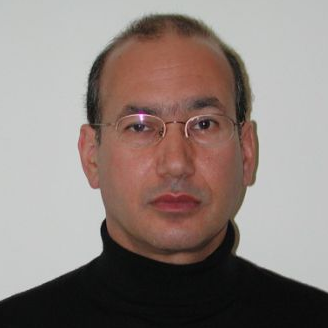Plant Photochemistry, Reactive Oxygen Species and Photoprotection
A special issue of Photochem (ISSN 2673-7256).
Deadline for manuscript submissions: closed (31 July 2022) | Viewed by 11991
Special Issue Editor
Interests: plant ecophysiology; biotic stress; abiotic stress; photosynthesis; antioxidative mechanisms; photoprotective mechanisms; mineral nutrition; ROS
Special Issues, Collections and Topics in MDPI journals
Special Issue Information
Dear Colleagues,
Plant photochemistry is a highly regulated process, in which the solar energy absorbed as photons by the light-harvesting complexes (LHCs) is transferred to the reaction centres (RCs), where through charge separation the electrons flow from photosystem II (PSII) through cytochrome b6f and diffusible electron carriers to photosystem I (PSI). PSII and PSI work co-ordinately for efficient electron transfer and are located in the photosynthetic membranes of chloroplasts (i.e., the thylakoids). The result of the light reactions is the formation of ATP and reducing power (reduced ferredoxin and NADPH) that need to be coordinated with the activity of metabolic processes for carbohydrate synthesis. However, in the light reactions of photosynthesis, reactive oxygen species (ROS) such as superoxide anion radical (O2• –), hydrogen peroxide (H2O2), and singlet oxygen (1O2) are continuously produced at basal levels but are scavenged by different antioxidant mechanisms. Thus, in plant photochemistry if the absorbed light energy exceeds that which can be used, this excess excitation energy must be quenched by the photoprotective mechanism of non-photochemical quenching (NPQ), so as not to damage the photosynthetic apparatus by the increased ROS production that can lead to oxidative stress.
ROS produced in chloroplasts not only generate oxidative stress, but also confer important biological function (e.g., redox signalling). As the ROS formed by energy transfer (1O2) and electron transport (O2• –, H2O2) are produced simultaneously, it seems likely that their action in signalling pathways interferes with the signalling pathways occasionally to antagonize each other. The role of chloroplast antioxidants, which often have overlying or interrelating functions, is not to totally eliminate ROS, but rather to achieve an appropriate balance between production and subtraction so as to match with the operation of photosynthesis, permitting an efficient spreading of signals to the nucleus. Consequently, ROS not only provide cells with tools to monitor electron transport and thus prevent over-reduction or over-oxidation, but also produce redox regulatory networks that enable plants to sense and respond to biotic and abiotic stress conditions. ROS activate the plant’s defence mechanisms in order to cope with the oxidative stress and are essential as signalling molecules for the regulation of a plethora of physiological functions tightly, accomplishing plant function and development.
This Special Issue of Photochem will contribute to a better understanding of plant photochemistry mechanisms and ROS interference as a signalling molecule for photoprotection, but also for generating oxidative stress under different environmental conditions.
We encourage original research submissions, as well as review/mini-review articles, concerning basic aspects and future research directions in the field.
Prof. Dr. Michael Moustakas
Guest Editor
Manuscript Submission Information
Manuscripts should be submitted online at www.mdpi.com by registering and logging in to this website. Once you are registered, click here to go to the submission form. Manuscripts can be submitted until the deadline. All submissions that pass pre-check are peer-reviewed. Accepted papers will be published continuously in the journal (as soon as accepted) and will be listed together on the special issue website. Research articles, review articles as well as short communications are invited. For planned papers, a title and short abstract (about 100 words) can be sent to the Editorial Office for announcement on this website.
Submitted manuscripts should not have been published previously, nor be under consideration for publication elsewhere (except conference proceedings papers). All manuscripts are thoroughly refereed through a single-blind peer-review process. A guide for authors and other relevant information for submission of manuscripts is available on the Instructions for Authors page. Photochem is an international peer-reviewed open access quarterly journal published by MDPI.
Please visit the Instructions for Authors page before submitting a manuscript. The Article Processing Charge (APC) for publication in this open access journal is 1000 CHF (Swiss Francs). Submitted papers should be well formatted and use good English. Authors may use MDPI's English editing service prior to publication or during author revisions.
Keywords
- Defence response
- Acclimation
- Photoprotection
- Light-harvesting complex
- Reaction centres
- Non-enzymatic antioxidants
- Chlorophyll fluorescence
- Photochemistry
- Reactive oxygen species
- Oxidative stress
- Environmental stress
- Antioxidant mechanisms
- Light reactions
- ROS production and scavenging
- Electron transport
- Redox regulation
- Photosynthesis
- Excitation energy
- Light-harvesting complex
- ROS production and scavenging
- Superoxide anion radical
- Hydrogen peroxide
- Proton gradient (ΔpH)
- Singlet oxygen




